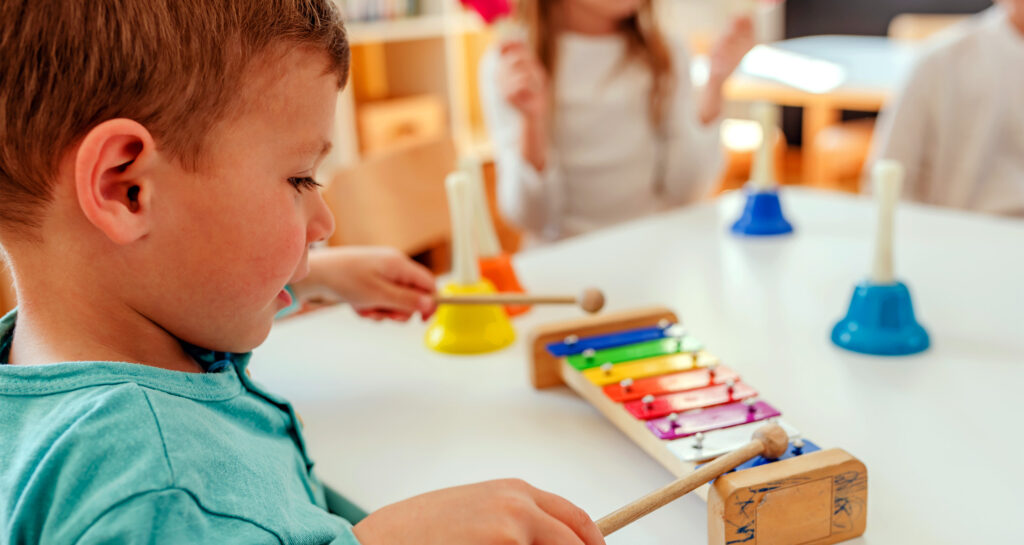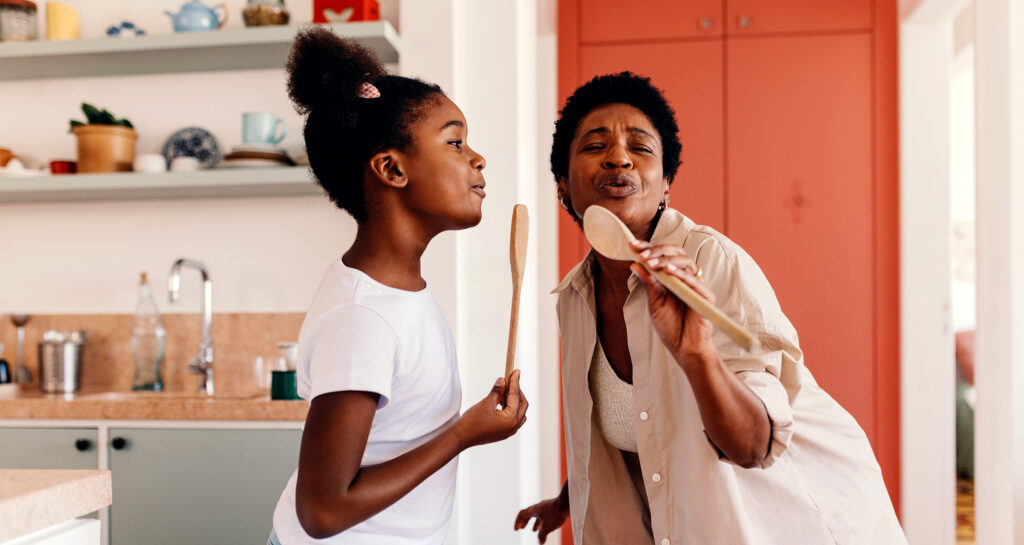5 Joyful ways to integrate music into family life
Published on April 27, 2025

As a mom, you’re always thinking about how to shape your children into thoughtful, curious, and well-rounded little humans. You want to raise kids with good taste, an appreciation for beauty, and maybe even a spark of greatness. But where do you begin, especially when it comes to music?
The good news is, you don’t need a conservatory degree or a perfectly curated playlist to get started. Music is a beautiful, natural part of life, and it can be woven gently and joyfully into your home. From building language skills to nurturing emotional connection, music supports your child’s development in ways both profound and playful.
Here are five heartwarming, doable ways to make music a cherished part of your everyday family rhythm.

Start with everyday musical moments
Transform everyday routines into playful musical moments to make daily tasks more engaging for your child. Sing a cheerful tune during morning activities like brushing teeth or getting dressed. Create simple rhymes or little chants for chores—think of the classic “clean-up” song as a fun way to encourage tidying up. (Or use Mozart to really refine your tidy-up skills!) Even the most ordinary moments can feel special with a bit of melody.
During car rides or quiet moments, hum a tune or play soft background music to create a calming atmosphere. These small practices don’t just bring joy—they also support your child’s language development, boost memory skills, and help your daily rhythm feel smoother and more connected.

Use simple instruments to spark curiosity
Introducing basic musical instruments can stimulate your child’s interest and creativity.
Provide age-appropriate instruments like egg shakers, tambourines, or small keyboards for exploration. Try crafting homemade instruments using household items, such as creating a drum from a pot or a shaker from a sealed container filled with rice.
Engaging with instruments aids in developing fine motor skills and hand-eye coordination. As your children grow older, encourage them to learn a musical instrument themselves!

Create a diverse musical environment at home
You don’t need to be a pianist to establish a musically enriched atmosphere in your home! Encourage spontaneous interaction with music in any form by playing a diverse range of music genres to expose your child to various rhythms and cultures.
NOTE: Don’t fall into the trap of playing only “children’s music” for kids! Even the youngest children can (and should!) enjoy a wide range of classical music, nursery rhymes, marches, bluegrass, folk music, liturgical hymnody, and more!
For more ideas, check out the Sound Bites courses. Designed for homeschoolers, these music appreciation classes can be a great adventure for all families!

Incorporate music into learning
Utilize music as an educational tool to enhance learning experiences. During these early years, teach numbers, letters, or new vocabulary through catchy songs and repetitive melodies.
Use rhythm and clapping games to explain mathematical concepts like skip counting and patterns. Music is an incredible memory tool and can make learning new concepts not just informative but fun as well!

Join community or school music programs
Participating in group musical activities can enhance social skills and a sense of belonging in your child. Enroll them in local music classes or school programs tailored for their age group, maybe a musical or a band. Attend live music events or children’s concerts to inspire and expose them to performances of all kinds, showing them both the potential and that being a beginner is okay as well!
Group music activities teach cooperation, sharing, and concentration—valuable skills for personal and academic growth.
Integrating music into your child’s daily life doesn’t require formal training or elaborate plans. Simple, joyful interactions with music can yield profound developmental benefits, fostering a lifelong appreciation for this enriching art form.



